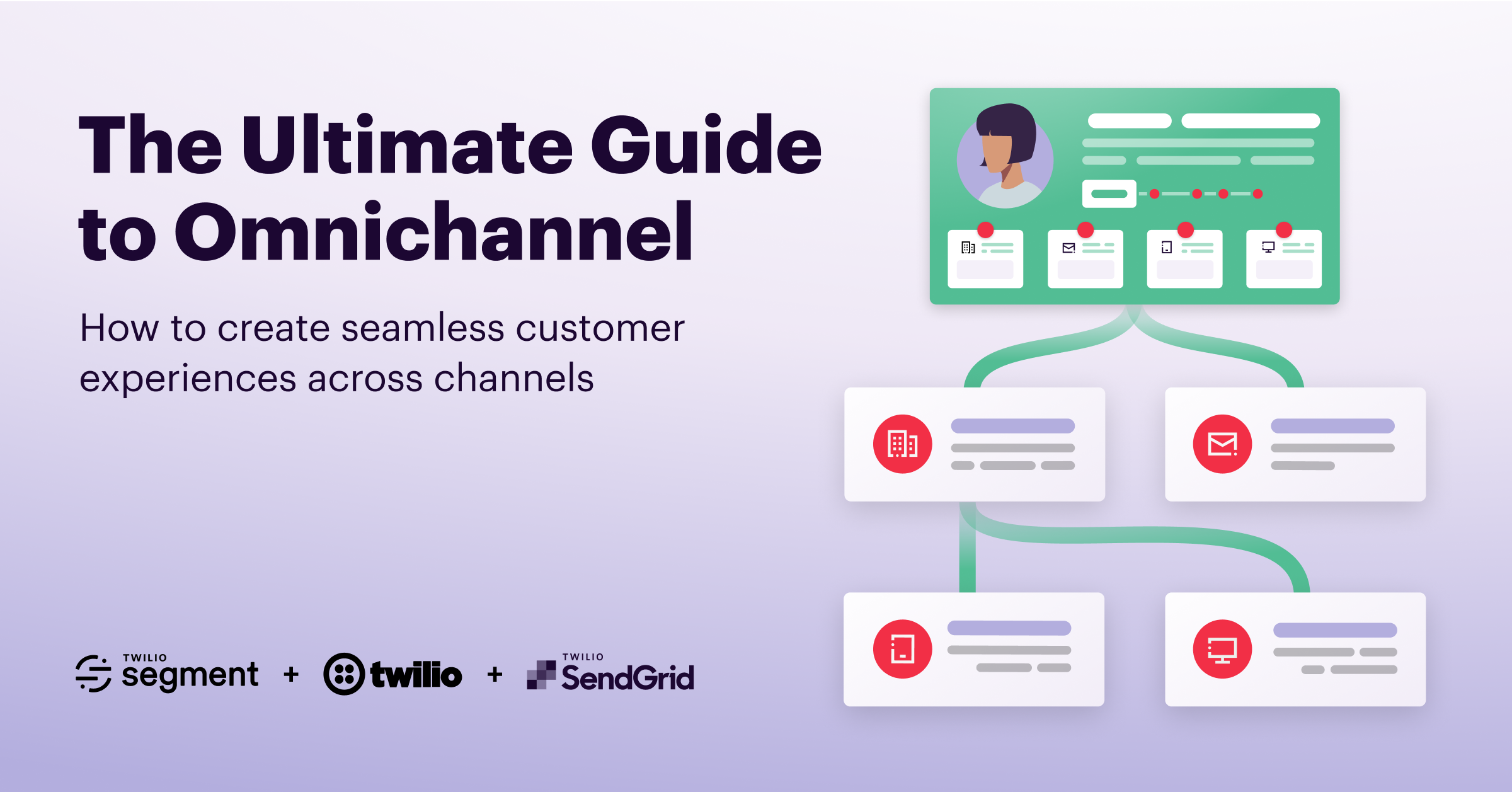New Guide! The Ultimate Guide to Omnichannel
Time to read:
This post is part of Twilio’s archive and may contain outdated information. We’re always building something new, so be sure to check out our latest posts for the most up-to-date insights.

According to Twilio’s 2021 State of Customer Engagement report, most businesses plan to add four new customer channels in the coming year, but just 1 in 4 businesses say they’re successfully investing in omnichannel personalization.
When businesses lack an integrated view of customers’ current and past behavior across all channels, they can inadvertently create a disjointed, fragmented customer experience that often results in churn or lost conversions. To understand why businesses struggle to create true omnichannel strategies, we partnered with Segment and SendGrid to create The Ultimate Guide to Omnichannel.
The guide has everything you need to implement omnichannel customer engagement at scale, including:
- The key differences between multichannel and omnichannel
- The importance of tracking cross-channel customer journeys
- The infrastructure and tools you need to implement a scalable omnichannel strategy
- How four leading brands use omnichannel experiences to wow customers
Download the guide for best practices and tips on how to start an omnichannel strategy at your business.
Why does omnichannel matter?
Today, most brands offer a wide variety of channels to communicate with and engage their customers, like email, WhatsApp, social media, video, chatbots, and more. Top global brands know where their customers prefer to do business and how to reach them. But just because businesses offer multiple channels, doesn’t mean they have one overarching strategy or view of how their customers interact with their brand. Therein lies the difference between a multichannel and an omnichannel approach.
To give you a sneak peek into the guide, we’re sharing three ways an omnichannel strategy can empower brands to better serve their customers:
Deliver hyper-personalized experiences
Every time your customers interact or do business with your brand, they are giving you a wealth of information on what they like, don’t like, and need. With siloed channels, your brand fails to capture this information, making it near impossible to deliver hyper-personalized experiences that pick up exactly where a customer left off.
On the other hand, when you have the systems in place to capture all of that customer information and make it readily available to your internal teams, you can more effectively target specific audiences, deliver customized content, and serve targeted deals.
Provide better customer service
When your customer service agents have real-time access to omnichannel data, they can quickly see past emails, chats, or call logs from a customer on a given issue. This can help the agent quickly get up to speed on why the customer needs assistance so they can resolve the issue faster and more efficiently. This can save your customer the frustration of repeating themselves every time they call, email, or text and give them the peace of mind that your team is working towards a timely resolution for them.
Improve internal collaboration
Departmental silos might be preventing your business from creating a seamless end-to-end experience for your customers. Adopting an omnichannel approach can remind every team and employee to think of the customer experience more holistically—after all, a customer’s journey rarely begins and ends on just one channel. Having an integrated view of customer behavior can also empower your team to spot trends and approach problems from a bird’s eye view.
For more helpful information and expert advice on building omnichannel communications, download our new guide The Ultimate Guide to Omnichannel.
Related Posts
Related Resources
Twilio Docs
From APIs to SDKs to sample apps
API reference documentation, SDKs, helper libraries, quickstarts, and tutorials for your language and platform.
Resource Center
The latest ebooks, industry reports, and webinars
Learn from customer engagement experts to improve your own communication.
Ahoy
Twilio's developer community hub
Best practices, code samples, and inspiration to build communications and digital engagement experiences.